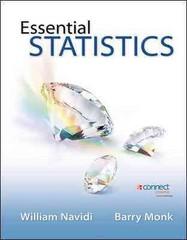Question
Explain the following: 1.Using diagrams, show short run and long run (including abnormal profit, loss or normal profit) for Perfect Competition, Monopoly and Monopolistic competition.
Explain the following:
1.Using diagrams, show short run and long run (including abnormal profit, loss or normal profit) for Perfect Competition, Monopoly and Monopolistic competition.
2.Calculate profit maximization output, price and total profit (Total Revenue Less Total Cost and MC=MR approach) for Perfect Competition and Monopoly.
3.Features /difference of Perfect Competition (such as price taker and perfectly elastic demand curve), Monopoly (natural monopoly), Oligopoly (inter-dependence) and Monopolistic competition (such as product differentiations).
4.Behaviors of oligopolistic market using kinked demand curve (including diagrams) and game theory (theory only).
5.Understand the concept of circular flow model including difference between leakages vs. injections.
6.Define unemployment, explain the types of unemployment such cyclical unemployment and the government polices to reduce it.
7.Effects, cost and benefits of inflation and policies to reduce inflation.
8.Effect of a change in interest rate, productivity, exchange rate, government expenditure and changes in income on AD/AS curve
9.Effect on shifts in AD/AS on inflation
10.Factors affecting movement along aggregate demand and factors shifting it or determines of aggregate demand.
11.Use AD/AS model (show clearly labelled diagrams) to explain impact on price level and economic output level when there changes such as consumer expectations, tax rates, oil prices, the world economic growth rates, fiscal policy and monetary policy.
12.Effect of fiscal policy on GDP and price level using AD/AS and multiplier.
13.Different types of business cycles and it impact on GDP, inflation and employment.
14.The relationship between monetary policy, interest rate and exchange rate.
15.Effects of open market operation (OMO) on money supply when Central Bank either buy or sell them?
16.Differentiating expansionary and contractionary fiscal policy using AD/AS model.
17.Relationship between the balance of payments (BOP) and the exchange rates.
18.Effect of an appreciation/depreciation on the economy such as on current account of BOP and inflation.
19.Features of fixed exchange rate and a floating exchange using examples.
20.The components of current account of balance of payment
21.Arguments for and against protectionism and restrictions in international trade.
22.Arguments for and against having a fixed exchange rate and floating exchange rate.
Step by Step Solution
There are 3 Steps involved in it
Step: 1

Get Instant Access to Expert-Tailored Solutions
See step-by-step solutions with expert insights and AI powered tools for academic success
Step: 2

Step: 3

Ace Your Homework with AI
Get the answers you need in no time with our AI-driven, step-by-step assistance
Get Started


